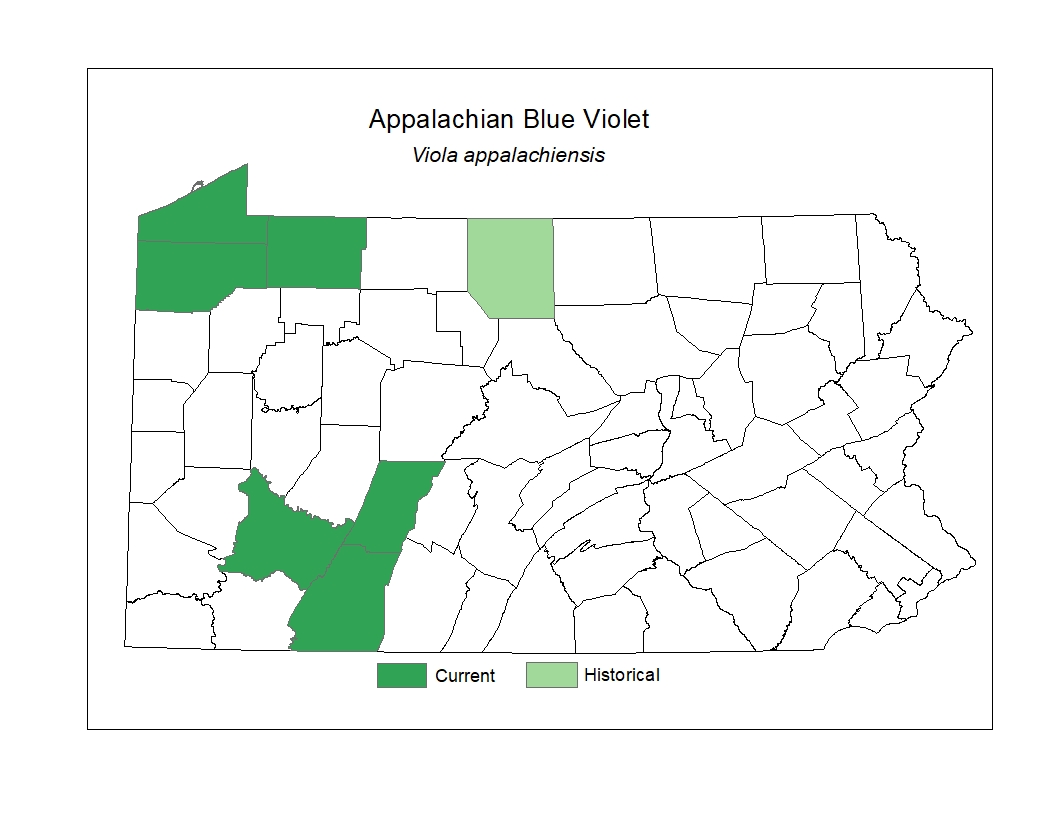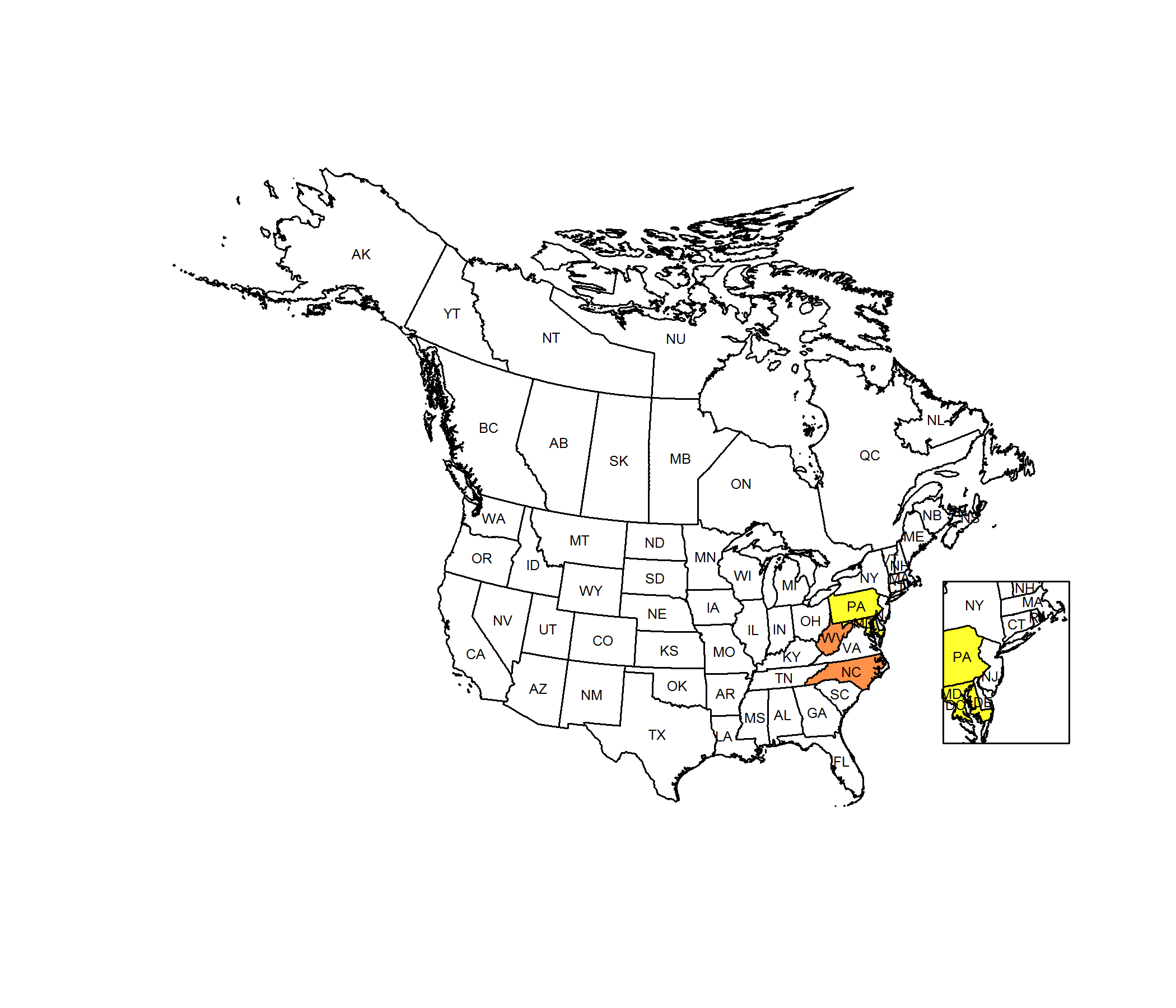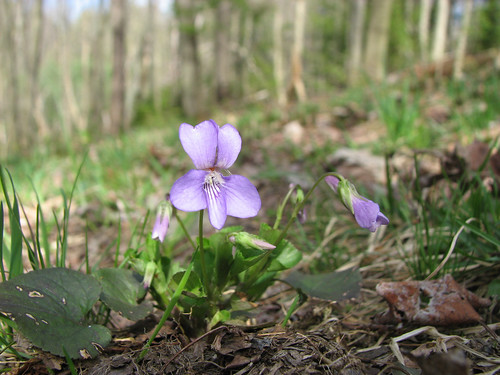 Species Factsheets
Species Factsheets
Viola appalachiensis
Appalachian Violet
State Status: Pennsylvania Threatened (PT)
PBS Status: Pennsylvania Rare (PR)
Federal Status:
Global Rank: G4
![]() rank interpretation
rank interpretation
State Rank: S3S4
Did You Know?
Violet species are known to have salicylic acid and large amounts of certain vitamins in them - some have been used for skin cancer treatments.
Description
Appalachian violet (Viola appalachiensis) is a low-growing herb with perennial stems, which first grow upright but eventually lay flat and grow roots, facilitating the plant's spread. Later in the season the plant often has a distinct mat-forming habit. It is very similar to Walker's violet (Viola walkeri) and the American dog violet (V. conspersa), and it was once thought to be a hybrid of these species. However American dog violets' stems are deciduous, dying away every year, and the leaves of Walker's violet are covered in fine hair, where those of the Appalachian blue violet are almost entirely smooth.
Rank Justification
Vulnerable in the nation or state due to a restricted range, relatively few populations (often 80 or fewer), recent and widespread declines, or other factors making it vulnerable to extirpation.
Habitat
Appalachian violets grow in serpentine barrens and rich forests in the southern Applachian mountains. They also grow well in disturbed areas, and have been found on ground that is regularly mowed, on dirt roads, and in old fields.
Survey Dates
Flowers April - June
Distribution

Threats
The primary reason for concern with this species is its limited global range. However, it is thought that this species has been frequently overlooked and may be more common than records indicate, and in most of its range most of the documented populations still exist.
Management
Since the Appalachian violet seems to colonize human-disturbed areas, it has strong prospects for recovery. The species would benefit from measures to control or extirpate invasive exotic competitors; reduction of habitat fragmentation and land-use conversion may also benefit this species.
Conservation Status Map

NatureServe. 2017. NatureServe Explorer: An online encyclopedia of life [web application]. Version 7.1. NatureServe, Arlington, Virginia. Available https://explorer.natureserve.org.
https://2bnthewild.com/plants/H53.htm
- NatureServe. 2018. NatureServe Explorer: An online encyclopedia of life [web application]. Version 7.1. NatureServe, Arlington, Virginia. Available at https://www.natureserve.org/explorer
- Pennsylvania Natural Heritage Program. 2018.
- Rhoads, A.F. and W.M. Klein, Jr. 1993. The Vascular Flora of Pennsylvania. American Philosophical Society, Philadelphia, Pennsylvania. Rhoads, A.F. and T.A. Block.
- 2007. The Plants of Pennsylvania: An Illustrated Manual. 2nd edition. University of Pennsylvania Press, Philadelphia, Pennsylvania.







